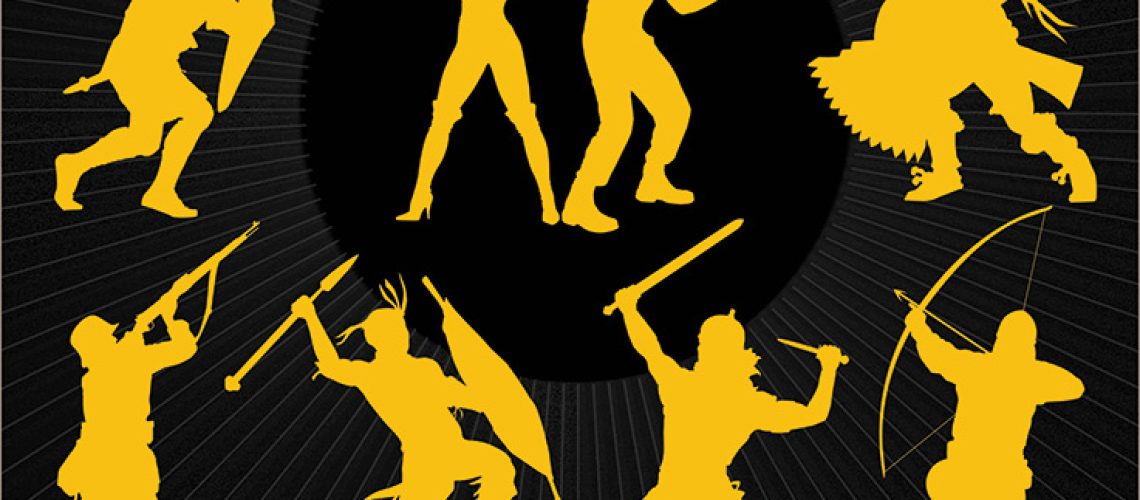After being bonded with the alien Tao, making good strides against the Genjix, and becoming a better man in the process, physically and otherwise, you’d think Roen Tan would have it made. Instead, several years after the events of The Lives of Tao, Roen and Tao have self-exiled themselves not only from Jill and their son, but also from the remainder of the Prophus. It’s a particularly painful separation.
And, sidelined as they have made themselves out to be, Roen and Tao’s side are in a relatively weaker position now, and the stakes are higher than ever. The Genjix are winning their long secret war against the rebellious Prophus. More and more of the countries of the world are falling under covert Genjix control. It’s everything Jill (and her own Quasing Baji) can do to keep things from slipping too badly.
In The Deaths of Tao, though, that might not be enough, as the Genjix have a new rising star in their ranks and a seemingly tantalizing approach to an old, old dream. Not the ancient dream to escape Earth, but a different desire entirely…
 One could call The Death’s of Tao Wesley Chu’s The Empire Strikes Back (The Lives of Tao being A New Hope). This sequel is darker, edgier, and more uncomfortable in significant ways than its predecessor. The sequel time jumps from the first novel by several years, having the reader to hit the ground running with a new and changed situation for Roen, Tao, and the Prophus-Genjix conflict. The Deaths of Tao does an excellent job in reintroducing the reader to the basic concepts and adds some new wrinkles.
One could call The Death’s of Tao Wesley Chu’s The Empire Strikes Back (The Lives of Tao being A New Hope). This sequel is darker, edgier, and more uncomfortable in significant ways than its predecessor. The sequel time jumps from the first novel by several years, having the reader to hit the ground running with a new and changed situation for Roen, Tao, and the Prophus-Genjix conflict. The Deaths of Tao does an excellent job in reintroducing the reader to the basic concepts and adds some new wrinkles.
We get to see new kinds and new forms of Quasing-human pairs and bondings and a re-envisioning of what that bond means (and what it doesn’t mean). I think a reader could pretty easily start the series here, especially if they are more interested in a high-level action episode rather than The Lives of Tao’s focus on Roen’s growth and development.
And it is these action sequences, just as those in The Lives of Tao, that are the strongest part of The Deaths of Tao. They are paced well, described excitingly, and excel character building and development. With Roen and Tao on the sidelines in a fair amount of the novel, this gives the author a chance to show the reader other characters. This extends not only to Jill and Baji, but also to a deeper, more complex look at the Genjix side, such as the Enzo and Zoras storyline, which gives us a deep look at their motivations, desires, and goals.
The holdover from the first novel of providing chapter beginnings showing the history of the Prophus-Genjix conflict were particularly well done this time. The author has taken the opportunity not only to show how significant episodes in human history have been influenced by this secret war, but he also provided a more general overview of the Quasing’s sojourn on Earth, with a clear indication of just how long they really have been here and how neither side of the conflict is completely dark or light. There are definite shades of grey introduced to how the Genjix and Prophus treat and have treated each other in these flashbacks.
However, a couple of the story beats, on the macro level, didn’t feel quite as well thought out or rigorously detailed as I would have expected. In some cases, the storyline felt a little rushed, as if the author wanted to get to ‘the good parts’. This does lead to some slight pacing issues in the novel, but nothing that kept me as a reader from turning virtual pages to find out what happens next.
Other than those flaws, however, Chu’s writing remains engaging, entertaining, and compulsively readable. The analogy to The Empire Strikes Back holds in that in many respects, this is the equal of the first novel. Readers of The Lives of Tao and this newer volume, The Deaths of Tao, will probably ask the same question that I have: is there a ‘Return of the Jedi’ coming for the third Tao book? I look forward to finding out.







